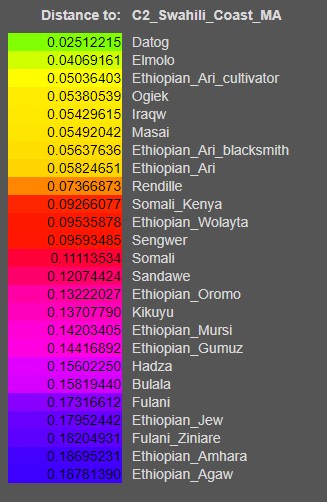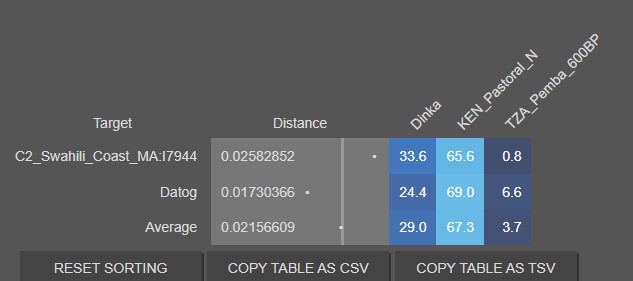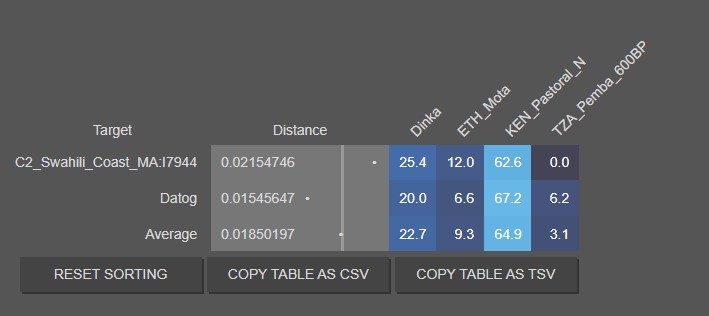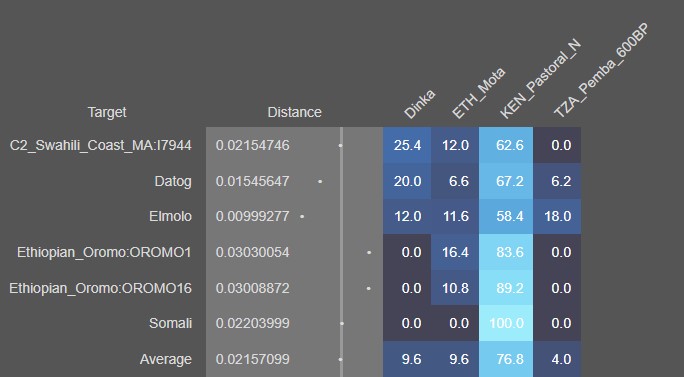The Cushitic-heavy individual got
Alchemist can you please send me the work were Al idrisi and Sa’idi mentioned Hawiye.
Do you think the Rendille language is the most Basal of all the Somaloid languages? Side note: I remember someone saying that Old South Arabian loan words have been detected in Rendille.
This is a bit off topic but yet relevant since we’re discussing E-M293. I was having an argument with another dude on another platform that E-M293, E-V6 came from Arabia and entered Africa via Eritrea. I came to this conclusion when looking at the CTS10880 and the old and diverse basal lineages in Arabia. You hardly see any of its branches in Nile valley samples whether ancient or not. There is also the connection with this ancient branch with its Semitic associated sibling E-M123 which we see among the Natufiams. E-V6 was found in Siwa Oasis berbers thus mirroring the Semitic-Berber connection on the AfroAsiatic tree

www.yfull.com
I think your right about ancient northern Somalia having E-V32 with other lineages that now died out.
I don't know if I have the stamina to sift through 100s of documents on this one. One source I read indirectly was through a Somali scholar and I think Al-Idrisi I found through a peculiar site. You know what, I know how you can hack it.. ask ChatGPT. I know this sounds ridiculous, but that machine can literally quickly source you. Ask it simply, "Did so and so mention Hawiye, " it will respond in the affirmative (technically the machine can't know what affirmation is, but I will not go into how the AI craze is a farce), and then demand the references for sources. It will probably reference Arabic direct sources. Then you can request for it to drop English translation and/or scholarly review and whatever you seek. I think I have found the solution. Because, man, the last thing I want is to check countless texts at the moment, opportunity costs, you feel me? Still, I think this solution will work for you.
No, I don't think Rendille is basal to the others, it is just another separate divergent one that goes back to the same proto-dialect continuum. I don't know specifically if there is South Arabian words but I know there are word commonalities in all the Soomaali languages that is related to subsistence, tool use and stuff that is directly related to other interesting stuff.
I see. I favor the view that states Arabia is overrepresented sample-wise. That skew causes problems to base an interpretation. So I believe those lineages are likely from Northeast Africa. An Arabian introduction is almost possible to imagine for all the lineages including E-V32, which I don't think people really care to subscribe to unless you're one of those Twitter Arabs brothers.

All in all, we need more samples in the Horn of Africa, the broader Nile Valley, including southeast Africa. And yeah, of course, ancient DNA from all those areas too, not to mention Arabian ancient DNA as well. I believe you will see E-M293 and E-V6 and probably new sub-clades too once we have more information on the map.
But you know what, if you check Nile Valley Cushitic mtDNAs too, you will see them popping early in Arabia. I think various migrations happened from Nile Valley to Arabia that is unaccounted for historically and archeologically. I also think certain lineages from Nile Valley likely came to Arabia with the earliest Semitic groups that came down. At this point, the imagination is as good as it gets. But this is a digression.






 All in all, we need more samples in the Horn of Africa, the broader Nile Valley, including southeast Africa. And yeah, of course, ancient DNA from all those areas too, not to mention Arabian ancient DNA as well. I believe you will see E-M293 and E-V6 and probably new sub-clades too once we have more information on the map.
All in all, we need more samples in the Horn of Africa, the broader Nile Valley, including southeast Africa. And yeah, of course, ancient DNA from all those areas too, not to mention Arabian ancient DNA as well. I believe you will see E-M293 and E-V6 and probably new sub-clades too once we have more information on the map.